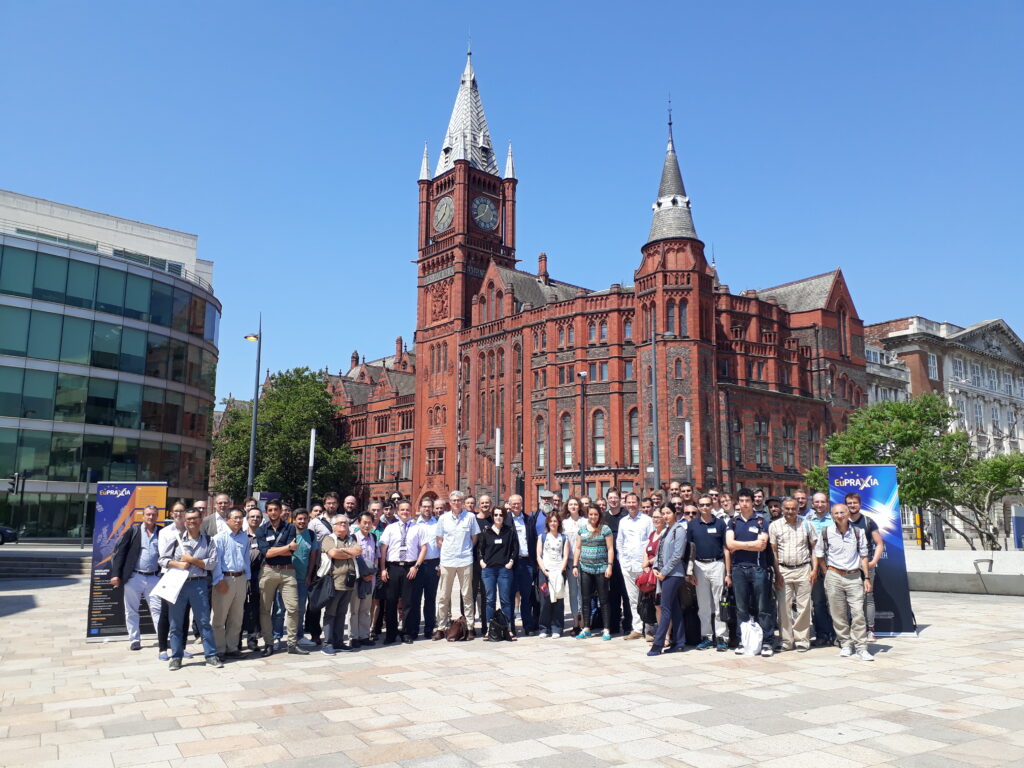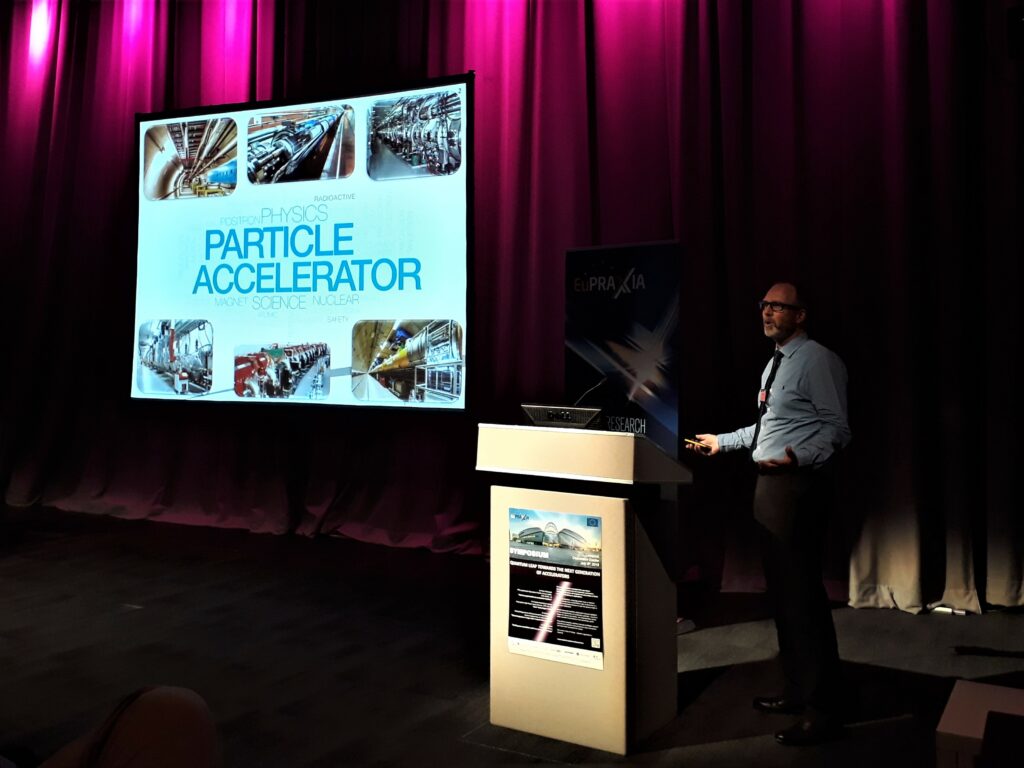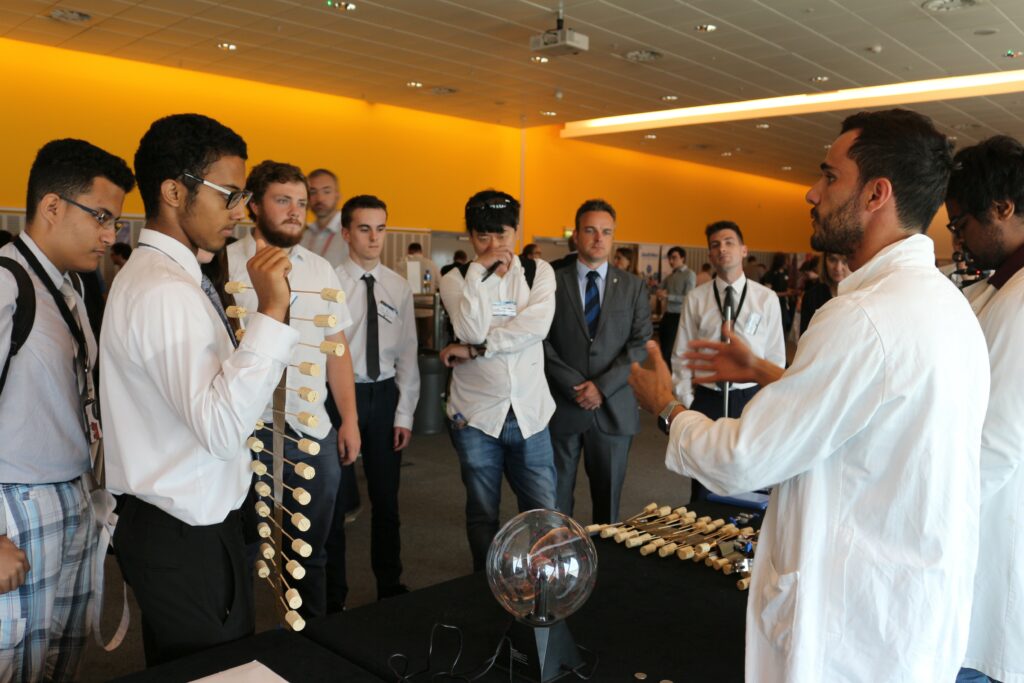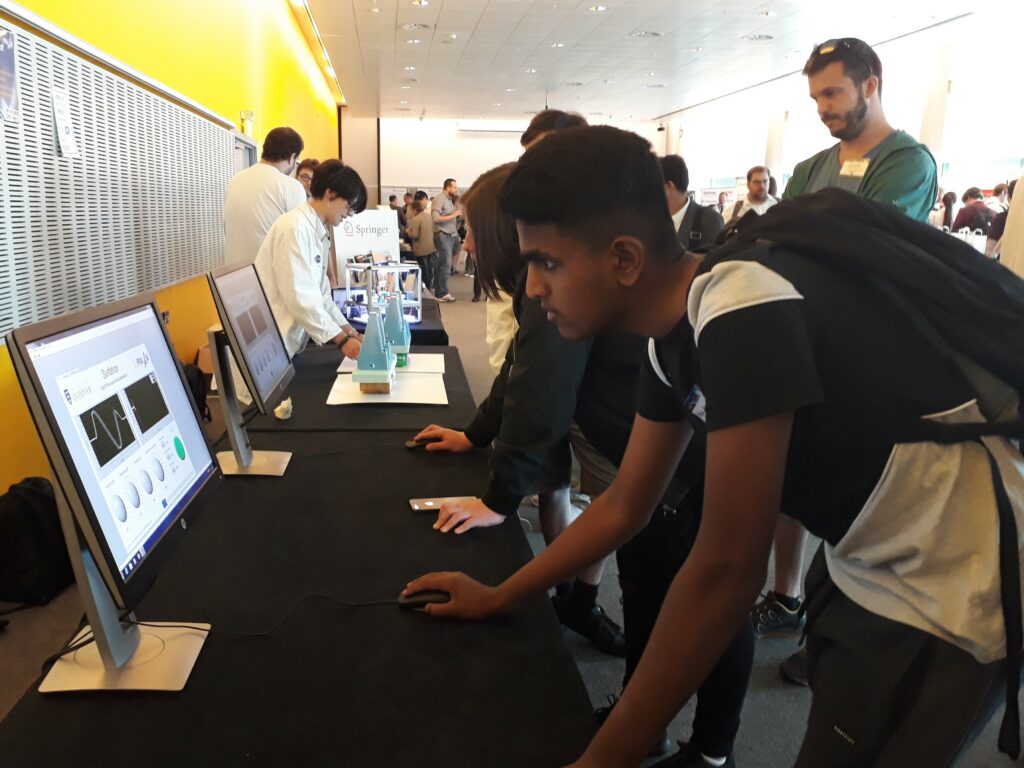Scientists from across Europe gathered in Liverpool last week to discuss the future of plasma accelerators, advanced laser technology, and industry opportunities alongside a discussion of research progress made within the EuPRAXIA Design Study, supported by the European Union within the Horizon2020 Framework Programme.

Scientists from across Europe gathered in Liverpool last week to discuss the future of plasma accelerators.
The EuPRAXIA collaboration, which involves the CI Universities Liverpool, Manchester and Strathclyde, as well as STFC/ASTeC, is designing a new plasma accelerator-based research infrastructure that can provide a 5 GeV electron beam with industry beam quality.
Professor Welsch, EuPRAXIA’s Director of Communication and Head of the Liverpool Physics Department, said: “Plasma accelerators show great promise for reducing the size, cost and complexity of accelerator-based research infrastructures. Within EuPRAXIA we study a whole range of innovative applications, from materials testing to the generation of shorted light pulses.”
The QUASAR Group from the University of Liverpool hosted the EuPRAXIA Collaboration Week (4-5 July) and the ‘Quantum Leap Towards the Next Generation of Particle Accelerators’ Symposium as a special showcase event for this novel technology at the Liverpool ACC on 6 July.
Prof. Welsch was very enthusiastic about the outcomes from both events: “The collaboration week allowed a critical assessment of the research progress made across all of EuPRAXIA’s scientific work packages. It was great to see that we are well on track for the publication of our conceptual design report next year. On the other hand, the Symposium was ideal to present the aims and opportunities of EuPRAXIA to a much wider audience.”
Oliver Burns, a student at Liverpool Life Sciences UTC, was one of over 150 local secondary school and sixth form students who attended the Symposium. Considering a career in accelerator science, Oliver commented: “This science is at the forefront of innovation, and it would be incredible to be a part of advancing the world we live in.”
The Symposium featured talks from research leaders about the science and technology of plasma accelerators. All of these talks can now be accessed via the EuPRAXIA website.

Dr Peter McIntosh (STFC-ASTeC) presenting a talk on accelerators for health, security and energy applications.
The event also included an industry exhibition highlighting the latest technologies and market-ready products. A poster session showcased the results from EuPRAXIA research to date.
Hands-on demonstrators such as building marshmallow waves, salad bowl accelerators and playing with the ‘Surfatron’ computer game helped to explain how this new type of accelerators works and how high energy particle beams can be optimised.
Professor Welsch explained: “At the Symposium we were talking to students about the design of a ground-breaking, ultra-compact accelerator that has the potential to radically change many areas of medicine and industry. There is a shortage of people with skills in this area so industry and academia are working closely to encourage more young people to enter the field.”
Physics teacher Simon Collins and 38 A-level students from St Francis Xavier’s College attended the day. Simon commented: “The day not only helped students learn about how accelerator science links to other areas of their physics studies, but helped their understanding of what makes up matter and the origins of the universe itself. Hopefully it inspired them, and encouraged them to continue into a scientific career.”
The find out more about the work of accelerator science, including opportunities for schools’ engagement, please visit our Education pages.


